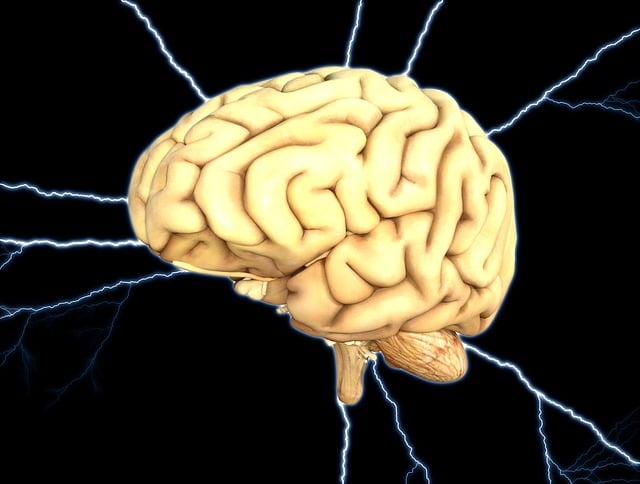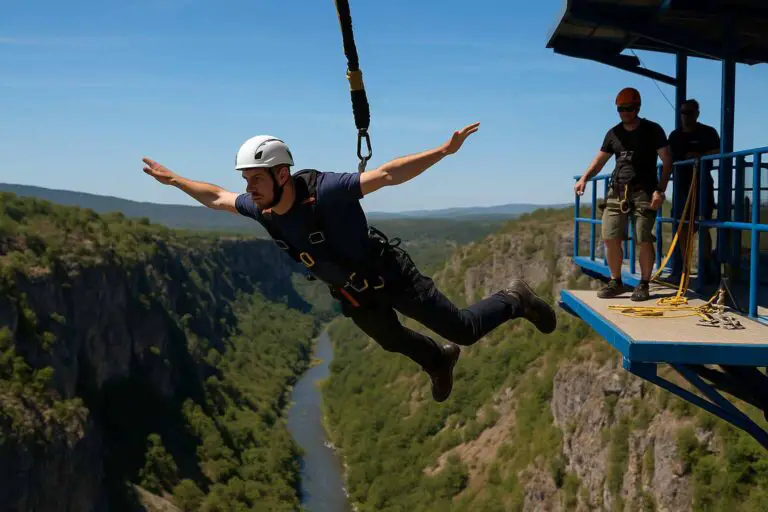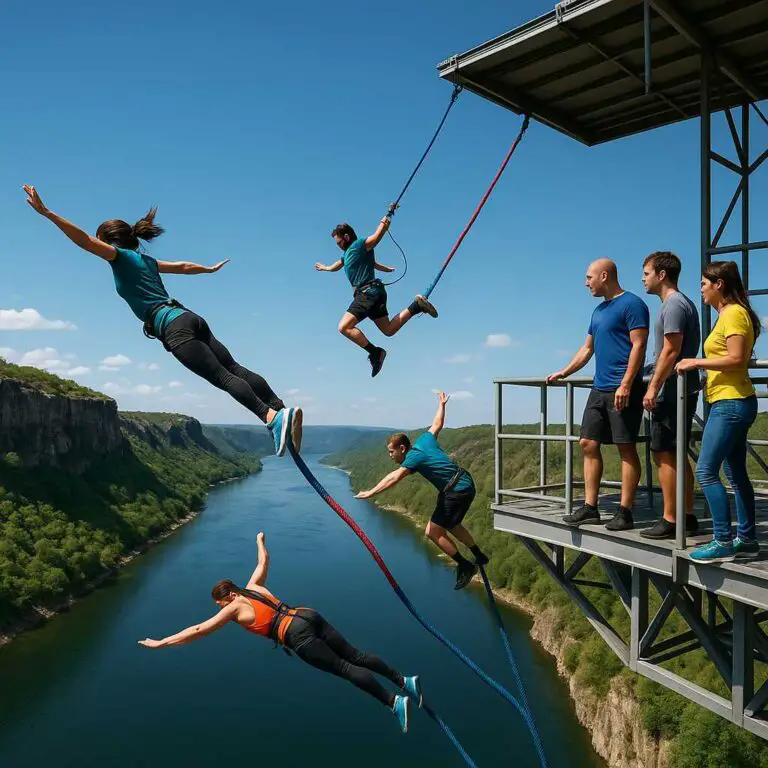Hi there! Have you ever wondered whether jumping can cause brain damage? Well, I certainly did, and that’s what inspired me to dive deep into this topic and share what I’ve learned with you. I’m not an expert by any means, but I’m passionate about brain health and understanding the real risks associated with physical activities like jumping.
The answer is that jumping, when performed responsibly and with proper techniques, is not likely to cause brain damage. The brain is well-protected within the skull, and during physical activities like jumping, it employs various mechanisms to safeguard itself, including the presence of cerebrospinal fluid as a shock absorber. However, it is essential to acknowledge that extreme or high-risk jumping activities, especially without appropriate safety measures, can increase the risk of brain injury. Additionally, certain individuals with pre-existing medical conditions or a history of head injuries might be more vulnerable.
But that’s not all. In this article, I’ll debunk the myths surrounding jumping and its supposed impact on the brain. I’ll explore the fascinating topic of brain functioning during physical activities, learn about the brain’s ingenious protective mechanisms, and understand the factors that might make certain individuals more vulnerable to injuries.
Let’s get started!
What Happens Inside the Brain When You Jump?
When you engage in physical activities like jumping, your brain orchestrates a complex series of events to ensure your body functions seamlessly. Understanding what happens inside the brain during jumping can help you appreciate the incredible coordination and protection mechanisms in place.
- Neural Signaling and Motor Control:
- As soon as you decide to jump, your brain sends signals through the nervous system to initiate the movement. The decision to jump involves different brain regions, including the prefrontal cortex, motor cortex, and cerebellum.
- Muscle Activation:
- Jumping requires the synchronized activation of numerous muscles throughout the body. The brain activates the specific muscle groups needed to execute the jump, such as the quadriceps and calf muscles in the legs.
- Balance and Proprioception:
- Maintaining balance during a jump is crucial to prevent falls and injuries. The brain relies on proprioception, a sense that enables us to perceive the position and movement of our body parts, to ensure our body stays in alignment during the jump.
- Spatial Awareness:
- The brain continuously processes sensory information from the environment, allowing us to gauge the distance to jump, anticipate the landing, and adjust our trajectory accordingly.
- Protection Against Brain Injury:
- The brain is well-protected by the skull, but it also employs additional mechanisms to shield itself during physical activities. One such mechanism is the presence of cerebrospinal fluid (CSF) that surrounds the brain, acting as a shock absorber to dampen the impact.
- Blood Flow Regulation:
- During physical activities, including jumping, the brain regulates blood flow to ensure it receives an adequate oxygen supply and nutrients. This helps maintain optimal brain function during exertion.
- Neurotransmitter Release:
- Physical activities, like jumping, trigger the release of neurotransmitters such as endorphins, dopamine, and serotonin. These “feel-good” chemicals contribute to the sense of pleasure and euphoria you experience during exercise.
It’s crucial to emphasize that the brain is remarkably efficient in managing these processes. Regular physical activities, like jumping, can even promote neuroplasticity, the brain’s ability to adapt and reorganize its neural connections in response to experiences.
Now, you might be wondering, does all this mean jumping is entirely risk-free for the brain? I’ll address that in the next section as I explore the actual impact of jumping on brain health and debunk some common myths.
Common Misconceptions about Jumping and Brain Damage
Jumping and its potential impact on brain health have given rise to several misconceptions. Let’s address these myths and separate fact from fiction:
#1 Myth: Jumping Causes Brain Cells to Die
- This is one of the most persistent misconceptions. While some physical activities can involve minor impacts, jumping alone does not cause brain cells to die. The brain is well-protected by the skull, and the CSF acts as a cushion to absorb shocks, minimizing the risk of brain cell damage.
#2 Myth: Jumping Leads to Permanent Cognitive Impairment
- Jumping, when done responsibly and without any pre-existing medical conditions, does not result in permanent cognitive impairment. The brain is resilient, and moderate physical activities, including jumping, can even have cognitive benefits like improving focus and memory.
#3 Myth: Every Jump Poses the Same Level of Risk to the Brain
- The risk of brain injury during jumping varies depending on various factors. Factors like the height of the jump, landing technique, surface, and individual health play crucial roles. Responsible jumping practices, along with proper protective gear, can significantly reduce the risk of injury.
It’s essential to recognize that extreme or high-risk jumping activities, such as high falls or daredevil stunts without appropriate safety measures, carry a more substantial risk of brain injury. However, for recreational activities like trampolining, jumping on solid surfaces, or participating in sports, the risks can be mitigated with adequate precautions.
Understanding these misconceptions allows you to approach jumping with a balanced perspective. While it’s vital to be aware of potential risks, you shouldn’t let misconceptions deter you from enjoying the numerous benefits that physical activities, including jumping, have to offer.
The Science Behind Brain Protection During Physical Activities
The brain is a master at protecting itself during physical activities, including jumping. It has evolved intricate mechanisms to minimize the risk of injury while allowing us to engage in various movements. Let’s delve into the science behind brain protection during these activities:
- Cerebrospinal Fluid (CSF) as a Shock Absorber:
- The brain is surrounded by a clear, watery fluid called cerebrospinal fluid (CSF). One of its crucial roles is to act as a shock absorber, cushioning the brain against sudden impacts. When you jump or engage in physical activities, the CSF helps dissipate and spread the force, reducing the risk of direct impact on the brain’s delicate structures.
- Brain’s Position and Structure:
- The brain’s positioning inside the skull provides a natural protection mechanism. It is surrounded by protective bones and layered with protective membranes, keeping it secure and stable during movement.
- Blood-Brain Barrier:
- The brain is shielded by a protective barrier known as the blood-brain barrier. This barrier restricts the entry of harmful substances and pathogens from the bloodstream into the brain, ensuring a stable and safe environment for neural function.
- Scalp, Skull, and Meninges:
- The scalp, skull, and meninges (the membranes that cover the brain) provide additional layers of protection. The scalp helps absorb and distribute some of the impact force, while the skull acts as a rigid protective enclosure for the brain.
- Regulation of Blood Flow:
- During physical activities, the brain carefully regulates blood flow to meet its metabolic demands. It ensures that sufficient oxygen and nutrients reach the brain to maintain optimal function during exertion.
- Protective Reflexes:
- The brain employs protective reflexes to maintain balance and posture during movements like jumping. When you lose your balance, these reflexes automatically kick in to prevent falls and injuries.
It’s important to note that while the brain has these protective mechanisms, it is still susceptible to injury under certain circumstances. Activities with a higher risk of brain injury, such as extreme sports or contact sports, may require additional protective measures like helmets and padding.
Moreover, individual factors, such as pre-existing medical conditions or a history of head injuries, can influence brain injury risk. Therefore, understanding these protective mechanisms and adopting responsible practices during physical activities are essential for minimizing the risk of brain injury.
Identifying Risk Factors and Vulnerabilities
Identifying risk factors and vulnerabilities can help us understand who might be more susceptible to brain injuries during jumping or other physical activities. While jumping is generally safe for most people, certain factors can increase the risk. Let’s take a closer look:
- Age:
- Children and older adults might be more vulnerable to brain injuries during jumping. Children’s brains are still developing, and older adults may experience age-related changes that affect brain resilience.
- Pre-existing Medical Conditions:
- Individuals with certain medical conditions like epilepsy, migraines, or other neurological disorders may be at higher risk of brain injuries during physical activities. These conditions can make the brain more susceptible to damage from impacts.
- History of Head Injuries:
- Individuals who have previously experienced concussions or head injuries may have increased vulnerability to further brain damage. Prior head injuries can lower the threshold for subsequent injuries.
- Lack of Protective Gear:
- Not wearing appropriate protective gear, such as helmets, during high-impact activities can increase the risk of head injuries. Protective gear can significantly reduce the impact force on the brain and prevent severe injuries.
- Improper Technique:
- Using incorrect jumping techniques, such as landing with a stiff posture or not bending the knees, can increase the risk of injury. Proper jumping techniques can help distribute the force of the impact more effectively.
- Fatigue and Dehydration:
- Fatigue and dehydration can impair coordination and reflexes, making individuals more susceptible to falls and injuries during physical activities like jumping.
- Environmental Factors:
- Slippery or uneven surfaces can pose a higher risk of falls during jumping. Paying attention to the environment and choosing appropriate surfaces for jumping is essential.
- Lack of Warm-up and Conditioning:
- Jumping without proper warm-up and conditioning can increase the risk of muscle strains and loss of balance, potentially leading to falls and injuries.
It’s important to note that while these risk factors may increase the likelihood of brain injuries during jumping, responsible and safe jumping practices, along with appropriate protective gear, can significantly reduce the risks for most individuals.
If you or someone you know falls into any of the high-risk categories mentioned above, it’s essential to consult with a healthcare professional before engaging in high-impact physical activities like jumping. They can provide personalized advice and recommend precautions to ensure safety.
Concussions: Recognizing and Managing Brain Injuries
Concussions are a type of brain injury that can occur as a result of a sudden, forceful impact on the head or body. While they are commonly associated with contact sports, concussions can also happen during activities like jumping, especially if proper precautions are not taken. Recognizing and managing concussions is essential for ensuring the well-being of anyone involved in physical activities. Let’s delve into the details:
- Recognizing Concussion Symptoms:
- Concussion symptoms may not always be immediately apparent, so it’s crucial to be vigilant after any head injury or significant impact during jumping. Common symptoms include:
- Headache or pressure in the head
- Dizziness or balance problems
- Nausea or vomiting
- Blurred vision or sensitivity to light and noise
- Confusion or memory problems
- Feeling dazed or foggy
- Changes in mood or behavior
- Loss of consciousness (although not always present)
- Immediate Response:
- If you or someone else experiences a head injury during jumping and exhibits concussion symptoms, it’s important to take immediate action:
- Stop the activity and avoid any further head impacts.
- Seek medical attention promptly, especially if there is loss of consciousness, persistent symptoms, or worsening conditions.
- Rest and Recovery:
- Rest is crucial in the early stages of a concussion. Give the brain time to heal by avoiding physical activities, including jumping, that could worsen the injury. Limit screen time and mentally demanding tasks as well.
- Gradual Return to Activities:
- Return to physical activities, including jumping, should only occur after proper medical evaluation and clearance. Follow a step-by-step, gradual return-to-play protocol under the guidance of a healthcare professional.
- Never Ignore Concussions:
- Concussions should never be taken lightly. Ignoring or downplaying symptoms can lead to complications and delayed recovery. Proper management is essential to prevent long-term consequences.
- Prevention is Key:
- While accidents can happen, prevention is the best strategy. Always wear appropriate protective gear, such as helmets, during high-impact activities like jumping. Ensure proper technique and adhere to safety guidelines.
Remember, each concussion is unique, and recovery times can vary. It’s essential to be patient and allow the brain ample time to heal fully before resuming physical activities.
Lastly, if you suspect a concussion or have any concerns about brain health, don’t hesitate to seek medical attention. Healthcare professionals can provide personalized advice and guidance to ensure a safe and healthy return to activities like jumping.
In the next section, I’ll explore the measures you can take to minimize the risks while enjoying the joy of jumping.
Minimizing Risks While Jumping
Minimizing risks while jumping is essential to ensure a safe and enjoyable experience. By adopting responsible practices and taking necessary precautions, you can significantly reduce the chances of injuries, including brain injuries. Let’s explore 8 effective measures to stay safe while jumping:
- Wear Appropriate Protective Gear:
- When engaging in high-impact activities like jumping, always wear the appropriate protective gear. This includes helmets that are specifically designed for the activity you’re doing. Helmets provide essential head protection and can significantly reduce the risk of head injuries, including concussions.
- Choose Safe Jumping Surfaces:
- Select safe and suitable surfaces for jumping activities. Ensure that the surface is even, well-maintained, and free from obstacles or hazards that could increase the risk of falls or injuries.
- Use Proper Jumping Techniques:
- Learn and practice proper jumping techniques. Bend your knees when landing to absorb impact, and maintain good posture to distribute force evenly throughout your body.
- Warm-Up and Cool-Down:
- Always warm up before engaging in jumping activities. Warming up prepares your muscles and joints for physical exertion and reduces the risk of strains and injuries. Similarly, incorporate a cool-down routine after jumping to ease your body back into a relaxed state.
- Know Your Limits:
- Be aware of your physical abilities and limitations. Avoid attempting jumps that are beyond your skill level or fitness capabilities. Gradually progress and challenge yourself within a safe and controlled environment.
- Avoid Jumping While Fatigued or Dehydrated:
- Fatigue and dehydration can impair coordination and decision-making. Avoid jumping when you are tired or dehydrated, as this may increase the risk of accidents.
- Supervise Children:
- If children are engaging in jumping activities, ensure they are appropriately supervised. Children may have less-developed motor skills and may need guidance to stay safe during their jumping adventures.
- Know When to Seek Help:
- If you or someone else experiences a head injury or shows any signs of a concussion, seek medical attention immediately. Early recognition and appropriate management of concussions are essential for recovery and preventing complications.
Let’s explore alternative low-impact exercises that can provide a great workout without putting undue stress on your brain and body.
Balancing Fun and Safety: Alternative Low-Impact Exercises
Balancing fun and safety is crucial when it comes to physical activities. If you’re looking for alternative low-impact exercises that can provide an excellent workout without putting excessive stress on your brain and body, you’re in luck! Here are some fantastic options to consider:
- Swimming:
- Swimming is a low-impact, full-body exercise that provides a great cardiovascular workout without putting stress on your joints. It’s a refreshing way to stay active and improve overall fitness.
- Cycling:
- Cycling, whether on a stationary bike or outdoors, is a low-impact exercise that is gentle on your joints while still providing an excellent cardiovascular workout. You can enjoy cycling at your own pace and explore scenic routes.
- Yoga:
- Yoga is a wonderful practice that focuses on strength, flexibility, and relaxation. It offers various styles and levels, making it suitable for people of all ages and fitness levels.
- Pilates:
- Pilates is a low-impact exercise that emphasizes core strength, flexibility, and overall body awareness. It can improve posture, balance, and muscle tone.
- Tai Chi:
- Tai Chi is a gentle and graceful martial art that promotes relaxation, balance, and mind-body connection. It’s especially beneficial for older adults seeking to improve stability and flexibility.
- Dancing:
- Dancing, in its various forms such as ballroom, Zumba, or even dancing at home to your favorite tunes, is a fun way to stay active and get your heart pumping without significant impact on your joints.
- Walking:
- Walking is one of the simplest and most accessible forms of low-impact exercise. It’s a great way to stay active, enjoy nature, and improve cardiovascular health.
- Elliptical Training:
- Elliptical machines provide a low-impact, full-body workout that mimics the motion of walking or running without the jarring impact on your joints.
- Water Aerobics:
- Water aerobics classes are low-impact exercises performed in a pool, utilizing water resistance for a great workout while minimizing stress on your body.
Remember, engaging in low-impact exercises doesn’t mean sacrificing fitness goals. These activities offer numerous health benefits and can be just as enjoyable as high-impact exercises like jumping. Always listen to your body, and if you have any medical concerns or conditions, consult with a healthcare professional before starting a new exercise routine.
Balancing fun and safety is all about finding activities that bring joy while promoting your overall well-being. So, whether you’re jumping, cycling, or practicing yoga, stay active, stay safe, and embrace the variety of exercises available to maintain a healthy and happy lifestyle.
Now, let’s discuss the importance of seeking professional advice and support when it comes to brain health and overall well-being.
Seeking Professional Advice and Support
Seeking professional advice and support is crucial for maintaining optimal brain health and overall well-being. Healthcare professionals play a vital role in providing personalized guidance, identifying potential risks, and helping you make informed decisions about your physical activities. Here’s why regular check-ups and consultations with healthcare professionals are essential:
- Brain Health Assessment:
- Regular check-ups with healthcare professionals, including neurologists, can help assess your brain health and identify any pre-existing conditions or risk factors that may impact your participation in physical activities like jumping.
- Personalized Advice:
- Healthcare professionals can offer personalized advice based on your medical history, physical condition, and individual needs. This guidance can help you make informed choices about the types of exercises that are safe and suitable for you.
- Concussion Management:
- If you’ve experienced a head injury or suspect a concussion during physical activities, seeking immediate medical attention is crucial. Healthcare professionals can assess the severity of the concussion, recommend appropriate management, and guide you through the recovery process.
- Safety Precautions:
- Professionals can educate you on safety precautions specific to your activities. Whether it’s the proper use of protective gear, warm-up techniques, or exercise modifications, their expertise can help you minimize risks effectively.
- Monitoring Progress:
- Regular check-ups allow healthcare professionals to monitor your progress, track any changes in your health, and make necessary adjustments to your exercise routine as needed.
- Holistic Health Management:
- Healthcare professionals consider not only brain health but also your overall well-being. They can provide guidance on nutrition, sleep, stress management, and other factors that contribute to your overall health and performance.
- Support During Rehabilitation:
- If you’ve experienced a brain injury or are recovering from a concussion, healthcare professionals can provide ongoing support and rehabilitation strategies to aid your recovery and ensure a safe return to physical activities.
Remember, professional advice is not just for individuals with pre-existing conditions; it benefits everyone, from beginners to seasoned athletes. Even if you feel healthy and have no known medical concerns, regular check-ups can help identify potential issues early and ensure that you’re engaging in activities that promote your well-being.
Conclusion
In conclusion, can jumping cause brain damage? The answer is that jumping, when done responsibly and without any pre-existing medical conditions, does not cause brain damage. The brain is well-protected by the skull, and its natural defenses, such as cerebrospinal fluid, act as shock absorbers to minimize the risk of brain injury.
It is essential to differentiate between responsible jumping practices and extreme, high-risk activities that may pose a greater danger. Engaging in moderate jumping activities and adhering to proper techniques, using protective gear like helmets, and being mindful of the surface can significantly reduce the risk of brain injury.
However, it is crucial to recognize that certain risk factors and vulnerabilities can increase the chances of brain injury during jumping. Factors like age, pre-existing medical conditions, and history of head injuries should be considered. In such cases, seeking professional advice from healthcare professionals becomes even more critical to ensure safety.
To balance fun and safety, exploring alternative low-impact exercises like swimming, cycling, yoga, and dancing can be an excellent way to stay active without putting undue stress on the brain and body.
Ultimately, the key to enjoying jumping and other physical activities lies in understanding the protective mechanisms of the brain, adopting responsible practices, and being aware of your individual limitations.
Happy jumping, and may your adventures be filled with safety and excitement!
Here’s another related article: Can Bungee Jumping Cause Brain Damage? Debunking The Myth And Unraveling The Science








